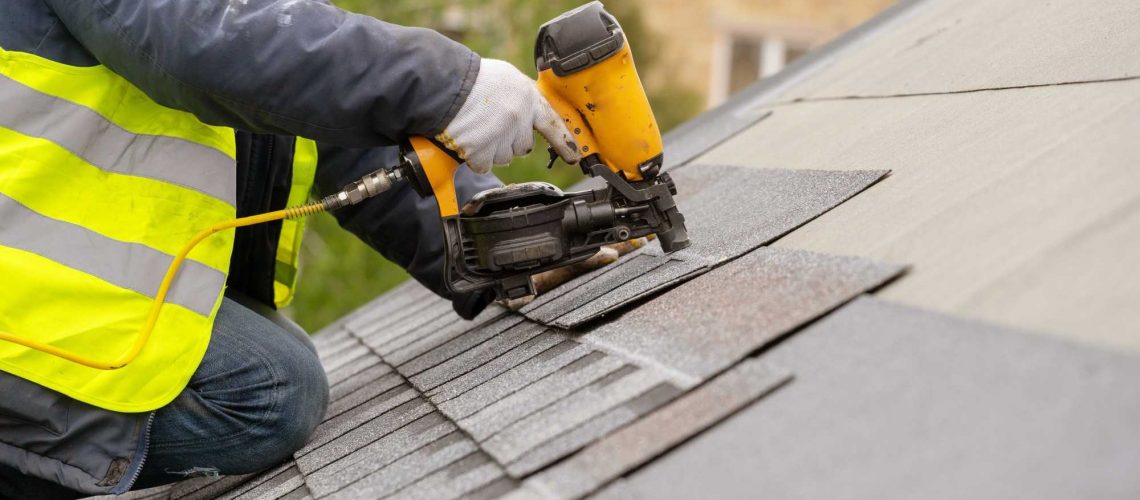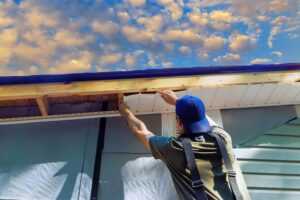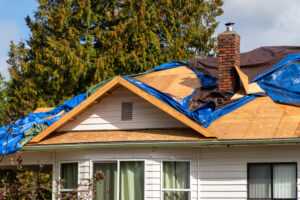Roofing costs range from $50 a square for asphalt shingles to $800 a square for slate. For a large roof with lots of peaks and valleys, the roofing costs quickly skyrocket.
Since roofing is one of the most expensive home improvement projects you can do, you don’t want to jump into it prematurely. But you also don’t want to risk waiting too long and causing serious damage.
So how often should a roof be replaced?
That depends largely on several factors, including how well you maintain the roof.
Keep reading to learn 10 signs it’s time for a new roof.
1. Old Age
Age isn’t the only factor in deciding to replace your roof, but it’s often an important one. No matter how well you take care of your roof, it won’t last forever.
The roofing material gives you a general idea of what’s considered old for a roof.
Many durable materials, including copper, tile, and slate, can last 50 years or longer.
If you’re dealing with wood shakes, you can expect around 30 years of service from your roof.
Asphalt shingles tend to have the shortest life span at around 20 years.
If your roof is nearing its expected lifespan, it might be time for a new one, especially if it shows other signs of an issue.
2. Visible Damage
A visual inspection of your roof can signal when it’s time for a replacement. You’re looking for any type of damage or changes to the roofing that signal potential damage.
If the roofing material deteriorates or suffers from damage, it can’t protect your home from rain, snow, and other weather elements. It can cause structural and interior damage that increases repair costs.
Some signs of damage include:
- Curled shingles
- Cracked roofing
- Missing shingles
- Spots from hail damage
- Missing shingle granules or granules in the gutter
- Loose shingles
In some cases, minor damage can be fixed by replacing part of the shingles. If your roof is newer and the damage is limited, check with a roofing company to see if a replacement is an option.
If your roof is older anyway or the damage is widespread, replacing the roof is likely the best option.
3. Sagging
Is your roof starting to dip? Sagging can signal a serious structural problem with your roof. There are many potential causes of sagging, including water damage, improper roof installation, or poor-quality or faulty roofing materials.
Look along the ridge of the roof to check for sagging. It should be straight across the ridge.
Even if you notice a subtle sag, it’s a good idea to have a roofing expert inspect it.
The sooner you can correct the sagging roof, the less potential there is for more serious problems. It’s usually cheaper to fix when you address the issue right away.
4. Visible Light
Inspect your roof from inside the home for more signs that it needs to be replaced.
One obvious one is seeing light inside your home. This means there’s a crack, hole, or gap that goes completely through the roof.
That opening also means rain, debris, and wildlife could get inside your home where they can cause damage.
5. Leaking
Water getting inside your home means there’s an issue with the roof.
Sometimes the leak is very obvious with water dripping or rushing into your home through the ceiling.
Other times it’s more subtle. You might notice water stains or marks on your ceilings.
If you just moved into your home and notice water spots, it could be leftover from previous roof damage that has since been fixed. Wait until it rains to see if the water spots grow larger or change their shape. If the appearance changes, it means you still have a leak.
6. Moss and Mold
Moss, mold, and mildew grow can signal moisture problems on the roof.
Initial growth could be just a surface issue. But continued growth could signal a problem.
The growth means that moisture is getting trapped in your roof. Excessive growth can cause more trapped moisture, which increases the chances of roof damage.
It can also push apart the shingles or cause damage to them if the growth gets too severe.
If you notice lots of growth, look for other signs of damage inside and outside your home. If no damage has been done yet, you might be able to remove the growth and protect your roof. But if there are other issues, it might be time for a new roof.
7. Wet, Soft Wood
When inspecting or walking on your roof, look for wet spots and softwood. You might notice darker spots on the roofing to show that it’s staying wet. That continued wetness can cause long-term damage.
The wood can get soft over time due to repeated exposure to moisture. You might notice the spot seeming weaker.
You might also notice more spring than normal in the roof. This can show weakness in the roof, which can affect the structural integrity.
8. Flashing Damage
Flashing prevents leaks around your chimney, vents, and other areas of the roof. It helps move water off of your roof to prevent damage and leaks.
If the flashing is damaged or failing, your roof is susceptible to more damage. It could allow the wood underneath to rot or otherwise become damaged.
If you notice issues with the flashing, hire a roofing expert to check for additional damage. It could be time for a roof replacement.
9. Rotting
Repeated exposure to water can lead to rotting on the wooden parts of your roof. If the wood under your roofing material rots, it’s much weaker and might not be able to support your roof properly. It can also increase the chances of leak damage inside your home.
10. Old, Worn Look
Your roof might still protect your home, but if it looks old, worn, or outdated, your curb appeal can suffer.
An old-looking roof can stand out especially if everyone else in your neighborhood has newer, nicer roofs.
Replacing the roof can increase your curb appeal and the value of your home while ensuring your house doesn’t stick out for being an eyesore in the neighborhood.
Answering How Often Should a Roof Be Replaced
How often should a roof be replaced? The answer varies based on all the factors, including the type of roofing, weather, care, and other elements. Looking for signs of needing a new roof helps you make the decision.
If your roof has seen better days, contact us to get a quote for replacing it.




